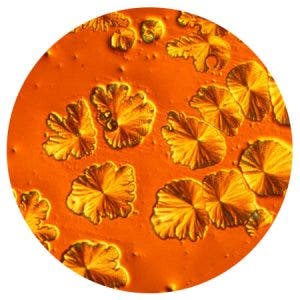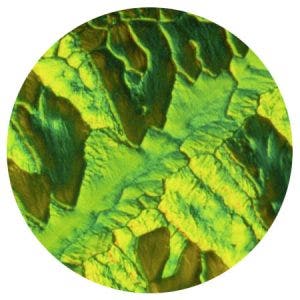Unlocking the Self in Our Cells

Sondra Barrett, PhD, finds wisdom may lie in our cells.
An abundance of health really comes down to the health of your cells. Research is beginning to suggest that it’s challenging to stay healthy, even psychologically, when the very foundation of physiological health is at risk. Sondra Barrett, PhD, makes the case that cellular health is core to our well-being as well as the sanctuary for life force and spiritual well-being, too.
Barrett, the author of “Secrets of Our Cells” and a self-described hardcore scientist, specialized in cancer-related cellular research. When she began working with kids and adults with life-threatening illnesses, she says, “Basically, I was teaching them about their ill cells and showing them healthy cells, if you will, what happens in the biology of illness.”
And more: Barrett, who was going through divorce while she was on the faculty of the University of California, San Francisco medical school, says, “Then I would teach them whatever I was learning for my own emotional healing — like using visualization and art for healing.”

Barrett’s attention to the form and function of cells and their visual identification, necessitated by her work for improving leukemia diagnosis, also made her increasingly aware of the design and beauty of cells and molecules, and drew her deeper into their mysteries. (Barrett’s photography through the microscope has earned numerous awards. See images here.)
Barrett began to investigate a field called psychoneuroimmunology, which looks at the roles of the mind and nervous system in the immune system, which is what Barrett calls the “healing system.” She observes that even as late as the 1990s, when it came to health, “The mind was rarely considered. Nutrition was never included…. Research was focused on the physical.” As she learned more about stress management practices, including meditation, tai chi, yoga and Qigong, she also became aware that these modalities focused on energy and provided a different perspective on what healing and health are about.
That’s when Barrett says she began seeing the cells as having more of a story. “I began translating what I saw in the cells as having more meaning. For example, cells have to move, which is one key proof of cellular intelligence, and cells have to generate energy” — just as we need to move our bodies. “I began really trying to understand the whole of creation, where the energy of life comes from, and translating everything I saw from the physical level into a metaphysical level.”
Rejoining mind and body — and creating sanctuary
Barrett posits that the separation of mind and soul from our notion of the body began with the philosopher Renee Descartes. Now research is beginning to show that that separation is artificial. Take stress: “It used to be that stress was about certain events happening in your life. But it [has since been found that] it’s how you see the event — it’s how you react to it.”

Breathing and focus practices induce a relaxation response that Barrett says reaches down from our psychology to our physiology. “Our mind is always on, and it’s running a thousand different stories. We can engage in those stories — one or more of them — [and that background activity puts us in] stress mode even though it feels unconscious.” Researchers found that people who meditated for longer periods of time had different brain waves — they had countered the body’s stress-based neurological activity and changed the physiological function of their brains.
As she continued to investigate the smallest unit of life, and a creation theory for it — the Big Bang theory only created a conducive environment — Barrett considered that molecules had to come together. In her view, those molecules were creating a sanctuary for life to happen: “Until there is a place for DNA to go, there would be no life…. For everything in our life processes and survival, trillions of cells are involved. For example, for our breathing — chest movement, heart pumping, blood circulation, awareness — requires trillions of cells to make that happen. Those cells hold us as sanctuary.”
From Barrett’s perspective, seeing the body and our cells as sanctuary for life can guide us personally to begin seeing ourselves as integrated body, mind and spirit. One reality she advises to keep in mind is that the brain “doesn’t know the difference between what’s real and what is imagined.” Barrett observes, “Your body will have the same physiological responses — or close to it — to your imagining or recollection of an event, as it does to the real thing. If you are worrying about losing your job, your body reacts as if that really happened.” She notes that an early study showed that similar brain activity to be present even for less provocative activity, such as looking at flowers in a garden and then imagining them.
Cells move us
More physiological phenomena at the cellular level reinforce the metaphysical view of health. Our old, simplistic view of a cell is simply an outer membrane surrounding the inside, containing the nucleus that carries most of our genes. The rest has been seen as a soup or gel called protoplasm or cytoplasm.
Barrett says, “What we’ve learned about the architecture of the cell is that so-called gel contains a powerful ‘managing’ cytoskeleton — strings, tubes and struts — that connects the membrane with the center.” When a receptor site on the surface of the cell moves and wraps itself around an informational molecule like adrenaline, she says, “That’s changing the shape of the cell a little bit and that’s dependent on the cytoskeleton, those strings within the cells. Since strings vibrate, they respond.
“When I first learned about this, I thought, ‘Now there’s finally an identified structure in our cells that explains how chanting, how music, how movement, how yoga, exercise could really work because we’ve got basically muscle [connecting the membrane with the center] in our cells.’” From Barrett’s perspective, when we are simply listening to music or doing yoga, the strings in our cells are humming and making healthier decisions.
Barrett anticipates that this motion does influence gene expression. “The cell ‘muscle,’ when the cells are stretched out and tense, will express one set of genes. And when the cells let go of some of that tension, they express a whole other set. If they have come to the end of their life, they’re going to let go of all their holding attachments, and a whole new set of genes is going to be expressed.”
Which brings Barrett back to the metaphysical. “Our muscles are not separate from our cells,” she concludes. “We are our cells.”
Sondra Barrett, PhD
You can learn more about Sondra Barrett’s work as a biochemist, mind-body healer, author and photographer on her website http://sondrabarrett.com/, and watch some of her lectures here.